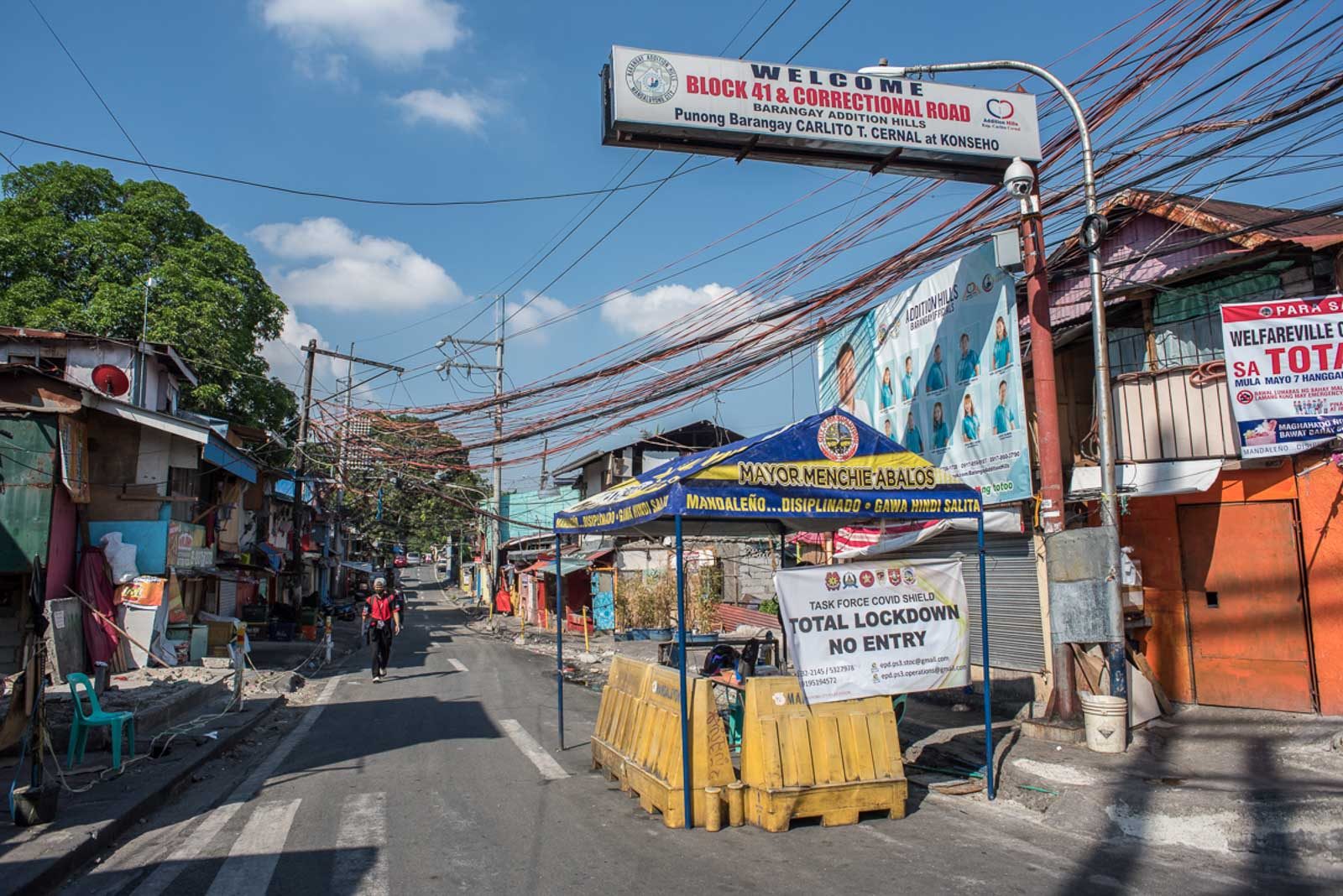SUMMARY
This is AI generated summarization, which may have errors. For context, always refer to the full article.

MANILA, Philippines – Government response teams may put certain places on lockdown if two or more coronavirus cases are reported in the same vicinity, the National Task Force (NTF) Against COVID-19 told reporters in a statement on Tuesday, June 2.
This is part of efforts to protect the public from a feared second wave of coronavirus cases as Metro Manila and other populous areas in the country relax lockdown measures and shift to general community quarantine (GCQ), said NTF chief implementer Secretary Carlito Galvez Jr.
“Mayroon tayong tinatawag na ‘rapid response,’ kung saan ila-lockdown natin ang isang building, pwedeng ila-lockdown din natin ‘yung isang block, isa o dalawang barangay,” Gavez said in a televised Malacañang briefing on Monday, June 1.
(We have what we call “rapid response,” in which we’ll place under lockdown a building, or a block, or a barangay or two.)
In such critical areas where a spike in transmissions of the virus is reported, the government will impose measures similar to enhanced community quarantine (ECQ). Metro Manila was under ECQ from March 15 to May 15, then modified ECQ from May 16 to 31.
A “localized lockdown” may be imposed on a barangay, a subdivision, or even a single building, depending on the location of reported COVID-19 cases, in order to immediately contain the virus, said Interior Secretary Eduardo Año.
“Dapat po, ‘pag may dalawa pataas [na kaso ng coronavirus], dapat po ay ila-lockdown na natin ‘yan para mas maliit, ay mas mabilis at mas madali nating mapipigilan,” Año added.
(If there are two or more coronavirus cases, we should lock that place down right away so that the smaller the area, the faster and easier it would be to contain.)
This plan also applies to areas under the even more relaxed modified general community quarantine (MGCQ).
On May 22, Galvez said the NTF was proposing a “lockdown by zones” to contain coronavirus cases even as economic activity resumes in most parts of the country.
In this scheme, an area with a reported spike in coronavirus cases is put on hard lockdown. Its peripheries are also placed on lockdown with decreasing strictness the farther they are from ground zero.
On June 1, Metro Manila, Davao City, Cagayan Valley, Central Luzon, Calabarzon, Pangasinan, and Albay transitioned from MECQ to GCQ. Work and business have mostly resumed, even as public transportation remains limited.
The government acknowledged that lifting lockdowns may cause a resurgence in viral transmissions, but said the economy could not stay shuttered any longer.
Experts said the ideal way to contain the virus is to carry out widespread testing among the populace in order to get a current and accurate picture of the outbreak.
The government said it is able to do 8,000 to 9,000 coronavirus tests per day. It initially aimed to reach 30,000 tests daily by May 30, but it has moved that target to June 30.
As of Tuesday, June 2, the Philippines has recorded 18,997 coronavirus cases, with 966 deaths and 4,063 recoveries. – Rappler.com
Add a comment
How does this make you feel?
There are no comments yet. Add your comment to start the conversation.